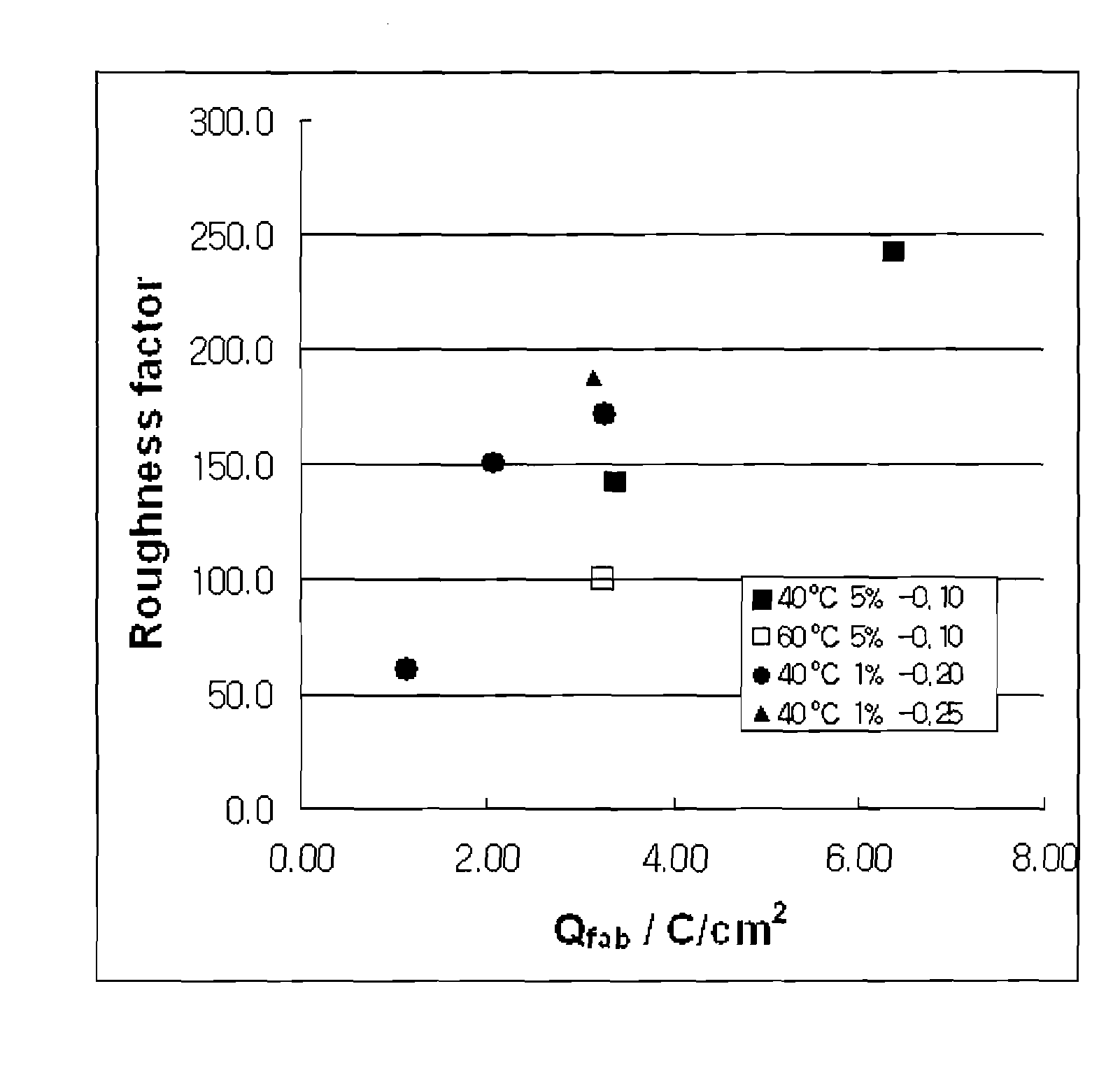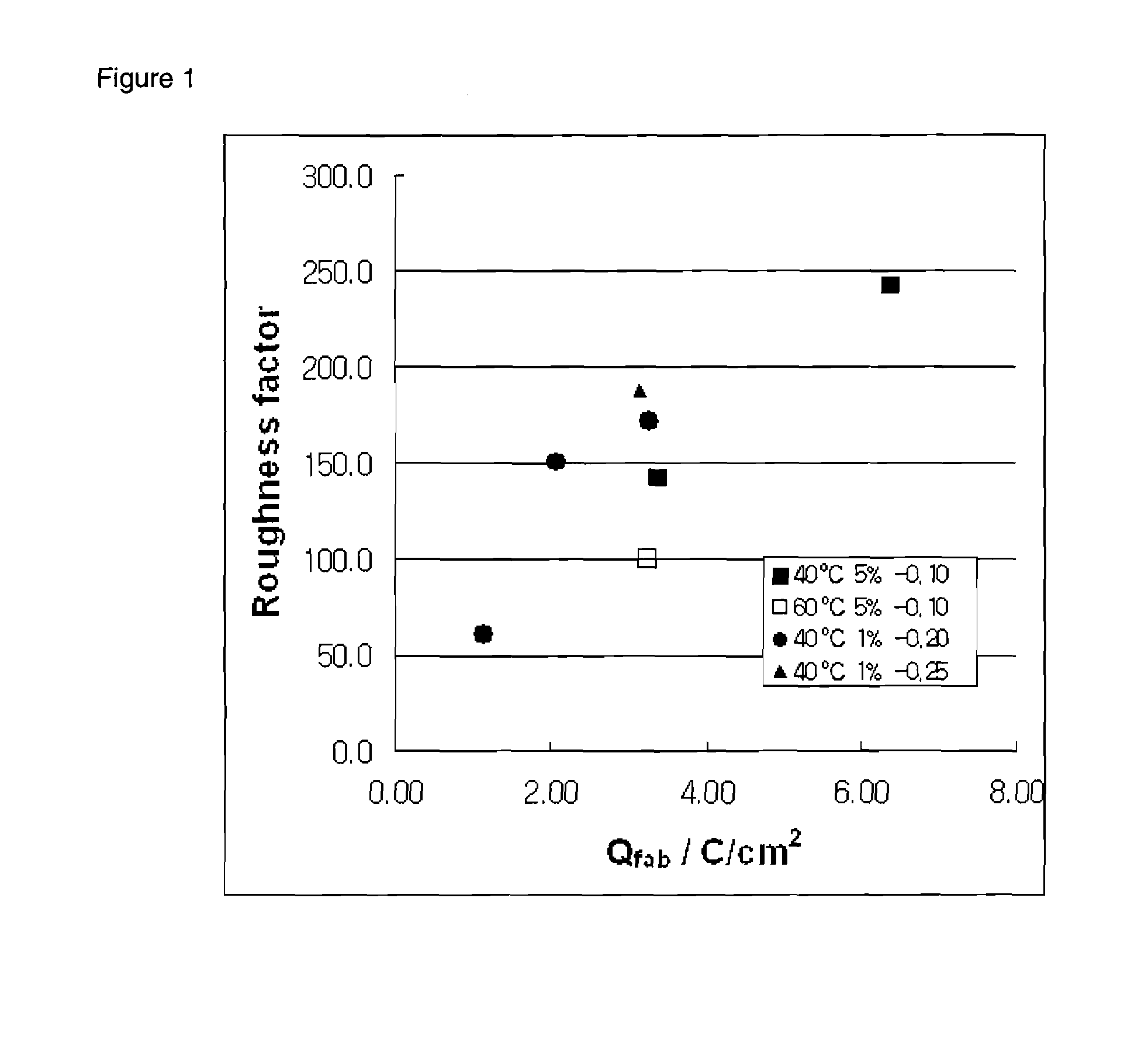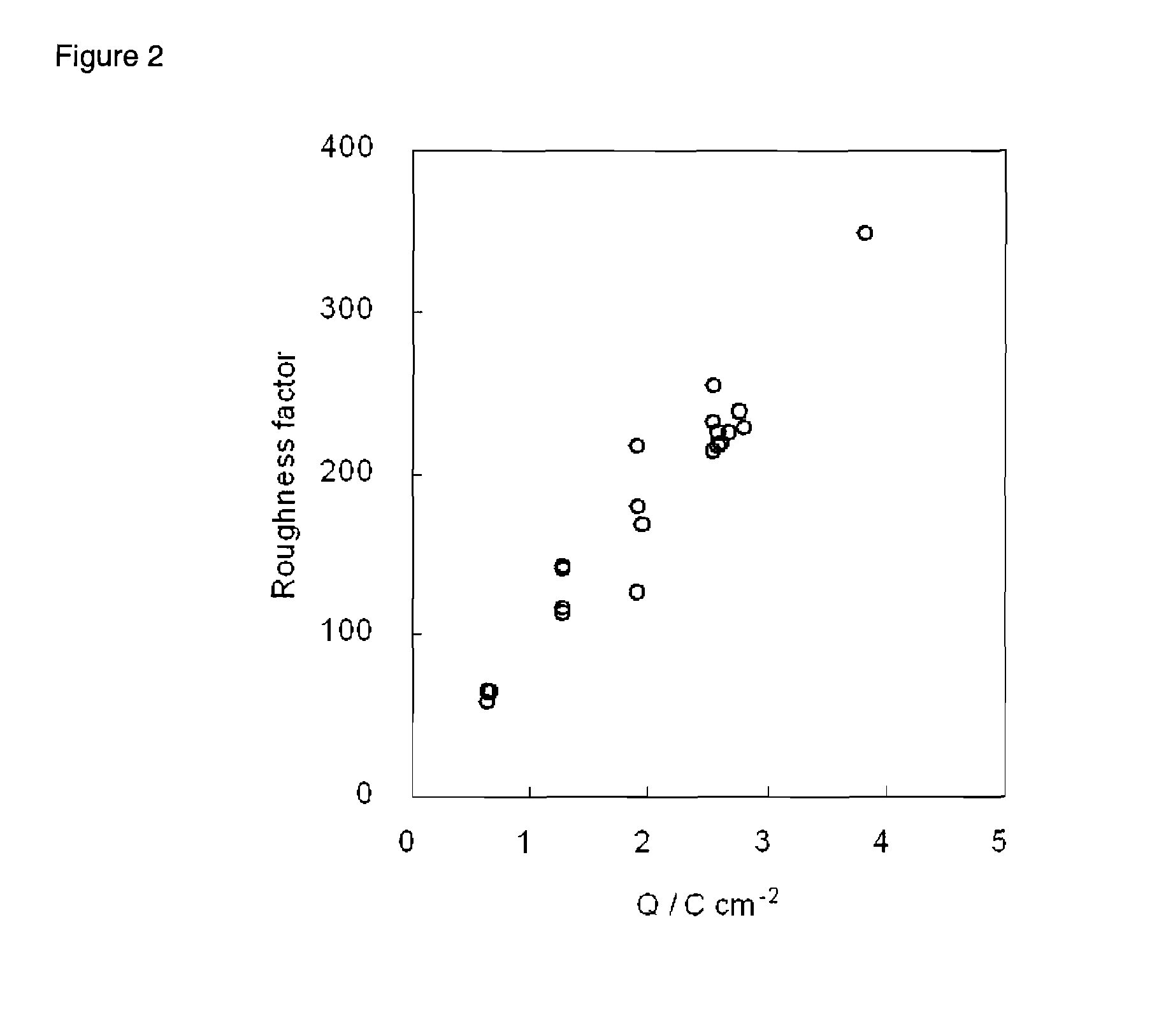Fabrication of mesoporous metal electrodes in non-liquid-crystalline phase and its application
a technology of mesoporous metal and non-liquid crystal, which is applied in the direction of surface reaction electrolytic coating, energy-based chemical/physical/physico-chemical processes, railway signalling, etc., can solve the problems of high cost, high cost, and inability to automate manufacturing processes, so as to improve the recovery and recycling of raw materials, the effect of high roughness factor
- Summary
- Abstract
- Description
- Claims
- Application Information
AI Technical Summary
Benefits of technology
Problems solved by technology
Method used
Image
Examples
examples
Materials
[0032]Triton X-100™ (Sigma), hexachloroplatinic acid hydrate (Aldrich), D-(+)-glucose (Sigma) and sulfuric acid were used without further purification. Gold and platinum disk electrodes were used. Another platinum disk electrode was used as flat platinum electrode after polished with alumina (0.3 μm).
[0033]Instruments
[0034]Electrochemical experiments were performed using an electrochemical analyzer (Model CH660, CH Instruments Inc., Austin, Tex. 78733). As an exemplarily sample, a gold or platinum rod electrode (0.0079 cm2) was employed as a substrate electrode for the deposition of mesoporous platinum film. Ag / AgCl (3 M KCl) and a platinum wire were used as a reference electrode and a counter electrode, respectively.
[0035]Preparation of the Non-Liquid Crystalline Mixture
[0036]Triton X-100™, a distilled water into which conductive electrolytes are dissolved, and hexachloroplatinic acid hydrate were mixed in a ratio of 50:50-x:x by weight, in which x has a value in a range o...
PUM
| Property | Measurement | Unit |
|---|---|---|
| temperature | aaaaa | aaaaa |
| temperature | aaaaa | aaaaa |
| thickness | aaaaa | aaaaa |
Abstract
Description
Claims
Application Information
 Login to View More
Login to View More - R&D
- Intellectual Property
- Life Sciences
- Materials
- Tech Scout
- Unparalleled Data Quality
- Higher Quality Content
- 60% Fewer Hallucinations
Browse by: Latest US Patents, China's latest patents, Technical Efficacy Thesaurus, Application Domain, Technology Topic, Popular Technical Reports.
© 2025 PatSnap. All rights reserved.Legal|Privacy policy|Modern Slavery Act Transparency Statement|Sitemap|About US| Contact US: help@patsnap.com



